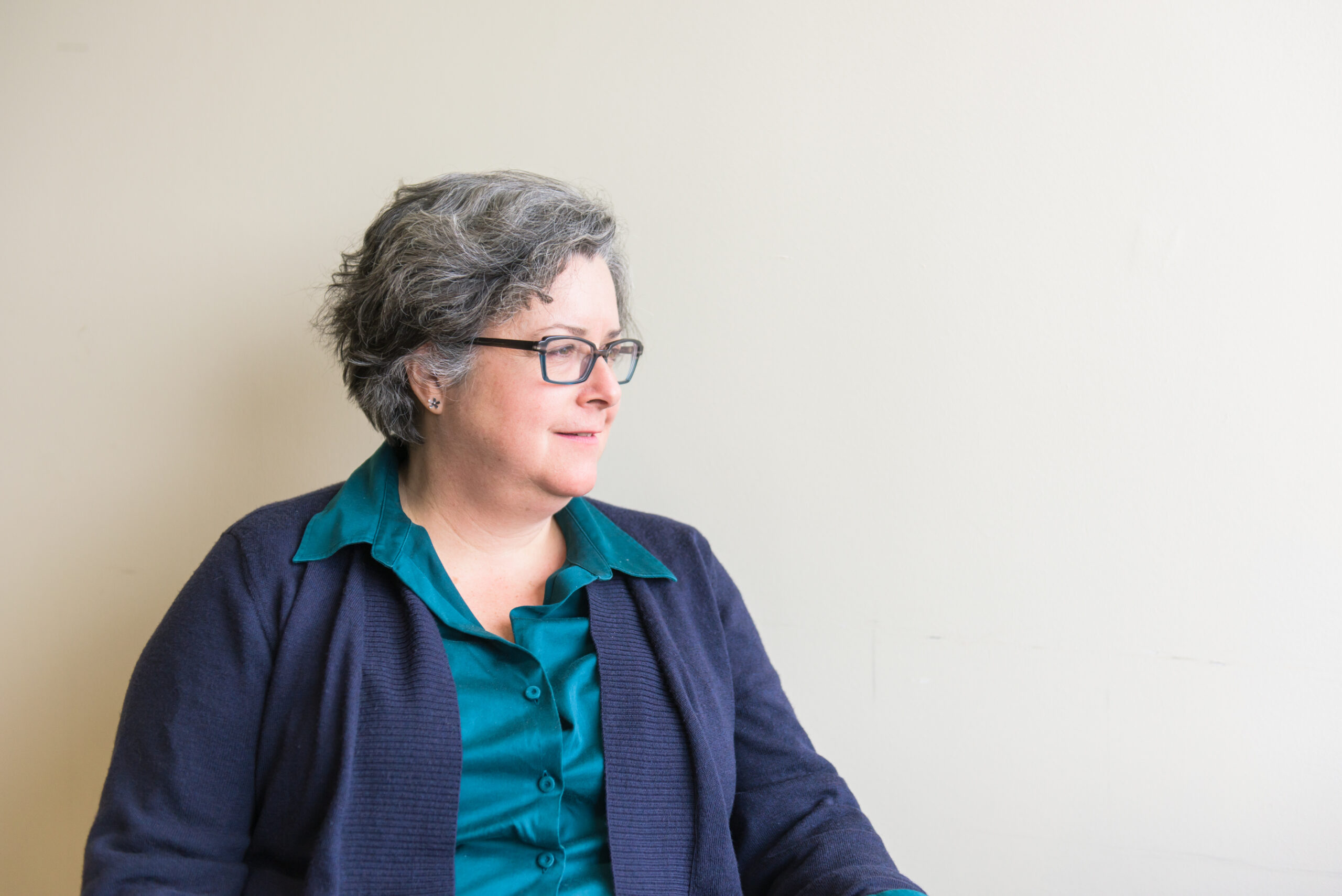UMBC’s Margaret Re will develop the exhibition and catalog for A Designed Life: American Textiles, Wallpapers, Containers and Packaging (1951-52) through support from a new $30,000 Art Works grant from the National Endowment for the Arts.
Re, an associate professor of visual arts who teaches design, is both the exhibition curator and principal investigator of A Designed Life, which is based on three historically significant traveling exhibitions of contemporary mass-produced, American-designed consumer goods that were commissioned by the U.S. Department of State in the early 1950s. It recreates and interprets those early Cold War exhibitions—including American textiles, wallpapers, containers, and packaging—restating and interpreting part of each display as it might have appeared in the early 1950s.
The three historical exhibitions—Contemporary American Textiles designed by Florence Knoll; Contemporary American Wallpapers designed by Tom Lee, and Containers and Packaging designed by Will Burtin—were each developed as collections of industry-specific consumer goods, designed and manufactured in the spirit of American modernism. The Traveling Exhibition Service (TES), an organization later known as the Smithsonian Institution Traveling Exhibition Service, organized these exhibitions for display in post-WWII Germany and France on behalf of the U.S. Department of State in order to help promote the grown of democratic governments within postwar Europe.
UMBC’s Center for Art, Design and Visual Culture (CADVC) will exhibit A Designed Life September 13 – December 8, 2018. Symmes Gardner, executive director of the CADVC, notes that the exhibition “will be a first for the CADVC investigating decorative arts. The exhibition will foster a unique and timely interdisciplinary dialogue encompassing design, history and political science that is in keeping with the CADVC’s mission to build connections between visual culture and the society at large.”
[nivoslider id=”38426″]
This new NEA-supported exhibition project is the result of extensive research by Re, who first came across a drawing of the Knoll-designed textile exhibit at the Archives of American Art in Washington D.C., before rediscovering the other two design exhibits. Over several years she continued her research through the National Archives and Records Administration, Smithsonian Institution Archives, Carey Graphic Arts Collection at the Rochester Institute of Technology, Berlin’s Bauhaus Archives, and the Document Library in Kassel, Germany. Re received support from a $30,000 Coby Foundation grant, UMBC’s START fund for new directions in faculty research, the Dresher Center for the Humanities scholars program, a CIRCA Summer Faculty Research Fellowship, and a grant from the Kunststiftung des Landes Sachsen-Anhalt to complete the work of developing the project.
The project includes several important partners. Morgan State University’s School of Architecture and Urban Planning will build the recreated traveling exhibition components, led by Adam Bridge. A team from The Johns Hopkins Graduate Program in Museum Studies led by Karen Wizevich and Deborah Howes will help develop visitor knowledge of, interest in, and reaction to the topics found within this exhibition, as well as public outreach.
Re is excited for the potential of the exhibit to help audiences explore the U.S. Department of State’s decision in the early 1950s “to connect consumer choice with political choice as well as the reception of European audiences to such cultural diplomacy in the post WWII years.”
Some scholarship exists chronicling the outcome of Department of State-sponsored art exhibits used in a similar capacity as soft power to promote American culture, such as exhibits of Abstract Expressionist painting. However, Re notes, “design exhibitions sent abroad that presented examples of consumer goods billed as readily available to American citizens are largely undocumented, especially those coordinated by the Smithsonian Institution and the Department of State.”
A Designed Life, Re explains, “makes evident the political potential of design to connect people, their activities, experiences, needs and desires, and shape attitudes as it broadens insight into design’s relevance as a tool for diplomacy.”
Public programming, including lectures and the publication of a catalog, will accompany the exhibition at UMBC in the fall of 2018.
Images: Margaret Re; photo by Marlayna Demond ’11 for UMBC. Concept drawings for the exhibition A Designed Life; courtesy of Margaret Re.
Tags: CADVC, CAHSS, DresherCenter, History, Research, VisualArts

